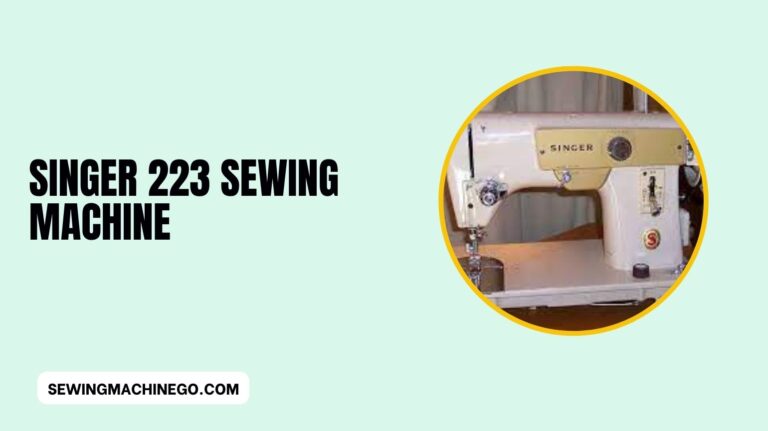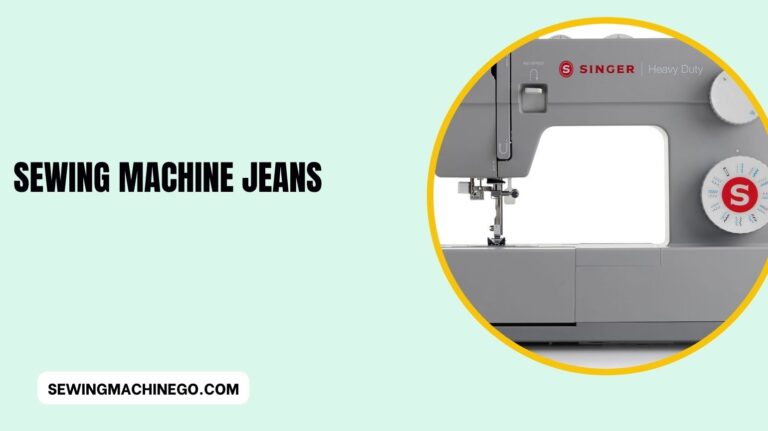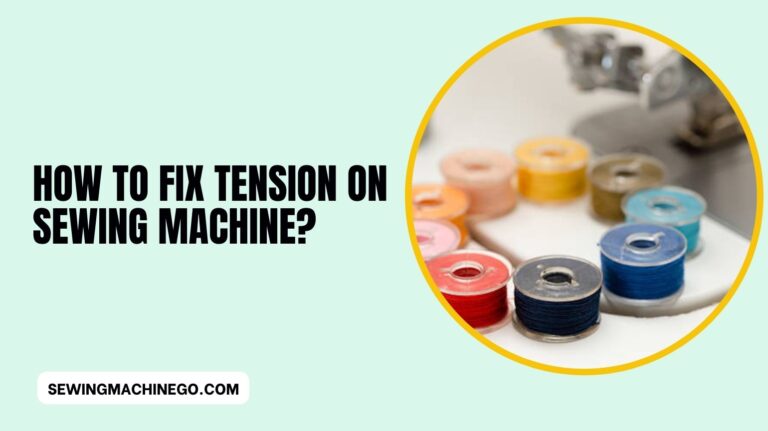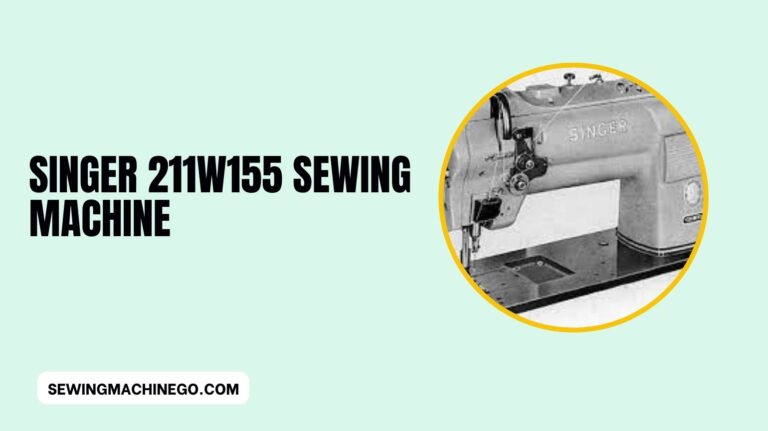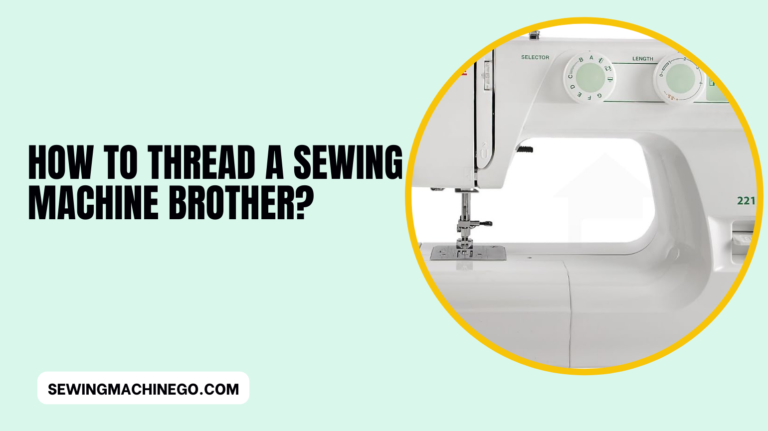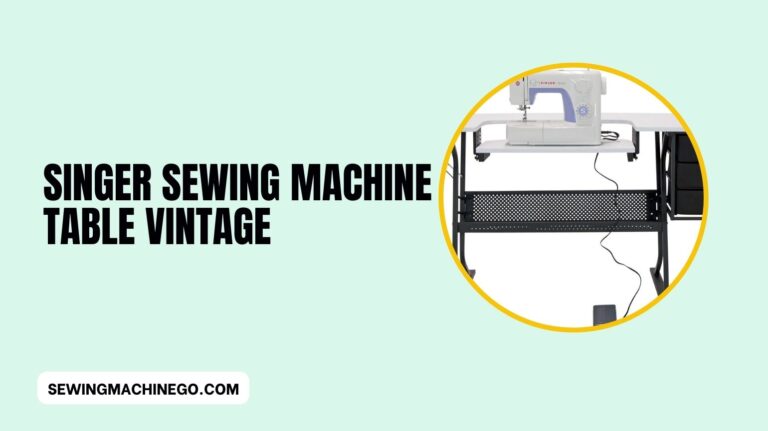How Much for Sewing Machine? In 2023
Embarking on the quest to purchase a sewing machine often raises the crucial question: “How Much for Sewing Machine?” Understanding the price range of sewing machines is the first step in navigating this diverse market.
From affordable basic models to high-end, feature-rich machines, the cost can vary significantly based on brand, features, and functionality.
In this guide, we’ll explore the spectrum of prices, the factors influencing them, and what to expect within different budget brackets.
Let’s unravel the pricing intricacies to help you find the perfect sewing machine that aligns with your needs and budget.
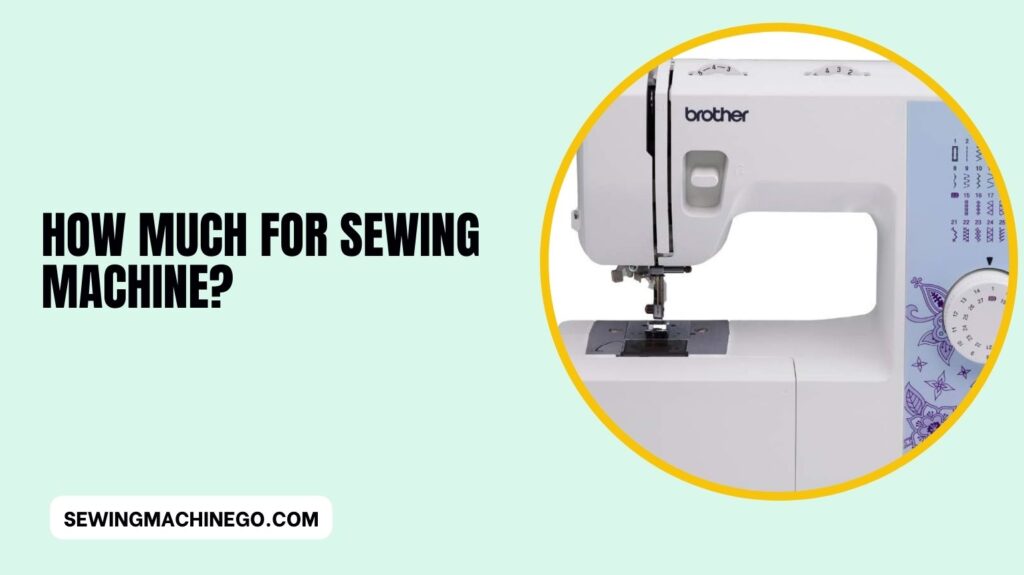
Types of Sewing Machines
When considering purchasing a sewing machine, understanding the types available is essential. Basic sewing machines cater to fundamental needs,
while computerized and industrial options provide advanced capabilities. Each type comes with its own set of features and price points.
Sewing machines come in various types designed for specific purposes:
- Mechanical Sewing Machines: These are manual machines operated by hand or foot pedals. They are straightforward, durable, and suitable for basic sewing tasks.
- Electronic Sewing Machines: These machines have added features like automatic stitching, speed control, and sometimes a limited number of built-in stitches.
- Computerized Sewing Machines: These advanced machines offer a wide range of stitch options, precise control, and programmable settings. They often include features for embroidery and quilting.
- Embroidery Machines: Specifically designed for intricate embroidery work, these machines allow users to create detailed designs on fabric.
- Quilting Machines: These machines are equipped with features to accommodate quilting tasks, such as larger workspaces, specialized feet, and stitch options suitable for quilting.
- Serger or Overlock Machines: Primarily used for finishing edges and creating seams in knit fabrics, these machines trim excess seam allowances while stitching.
- Industrial Sewing Machines: Heavy-duty machines built for high-volume or specialized tasks like leatherwork, upholstery, or heavy fabrics.
Each type caters to different sewing needs, so choosing the right machine depends on the projects you plan to undertake and the features required to accomplish them effectively.
Features and Functionality
The features of a sewing machine significantly impact its price. Consider the stitching options, built-in patterns, and whether you prefer automatic or manual functionality.
Understanding these elements helps you choose a machine that aligns with your sewing requirements.
Brands and Models
The price of sewing machines can vary based on the brand, model, features, and functionality. Here’s a general overview:
- Entry-Level Machines ($100 – $300): Brands like Brother, Singer, and Janome offer beginner-friendly models with essential features suitable for basic sewing tasks.
- Mid-Range Machines ($300 – $1000): These machines, also from brands like Brother, Singer, Janome, and Juki, offer more stitch options, advanced features, and durability, catering to intermediate sewers or those needing specialized functions like quilting or embroidery.
- High-End Machines ($1000 and above): Brands like Bernina, Pfaff, Husqvarna Viking, and Baby Lock produce high-end machines equipped with advanced technology, extensive stitch options, computerized capabilities, and specialized features for professional sewers or those with specific crafting needs.
Prices can fluctuate based on sales, promotions, or newer model releases.
When considering a sewing machine, it’s essential to research the features that align with your sewing goals and consider customer reviews for each brand and model to make an informed decision.
Budget Considerations
Budget plays a crucial role in determining the sewing machine that suits your needs. Explore entry-level options for beginners, mid-range machines for versatile use, and high-end models for professional seamstresses.
Buying Guide
To make an informed decision, assess your sewing needs, read reviews, and compare prices. A comprehensive buying guide ensures you select a sewing machine that meets your specific requirements.
Where to Buy
Deciding where to purchase your sewing machine is as important as choosing the machine itself. Local retailers, online marketplaces, and second-hand options each have their pros and cons.
Maintenance Tips
Taking proper care of your sewing machine is essential to ensure optimal performance and longevity. Regular maintenance not only prevents issues but also contributes to a smoother sewing experience.
Here are some practical tips to keep your sewing machine in top-notch condition.
Cleaning and Dusting
Regularly clean your sewing machine to prevent the accumulation of dust and lint. Use a small brush, compressed air, or a lint roller to remove debris from the bobbin area, and feed dogs, and other nooks.
Changing Needles Regularly
Frequently changing your sewing machine needle is crucial. Dull or bent needles can cause stitching problems and damage fabrics. Change the needle after every project or if you notice any issues with the stitches.
Oil Your Machine
Refer to your machine’s manual for oiling instructions. Proper lubrication of moving parts helps reduce friction and ensures smooth operation. Use high-quality sewing machine oil and follow the recommended schedule for oiling.
Checking Tension Settings
Maintain the correct tension settings for your sewing projects. Incorrect tension can lead to uneven stitches and thread breakage. Test on a scrap piece of fabric before starting a new project to ensure the right tension.
Cleaning the Bobbin Case
Remove the bobbin case and clean it thoroughly. Check for any lint or debris that might be affecting the bobbin’s smooth rotation. Clean the area around the bobbin case to ensure optimal thread tension.
Inspecting the Bobbin Thread
Regularly check the bobbin thread for tangles or knots. If you notice any issues, rethread the bobbin, ensuring it’s properly seated in the bobbin case. Clean the bobbin area before inserting a new bobbin.
Calibrating Needle Position
Check and adjust the needle position if needed. A misaligned needle can result in uneven stitches. Follow your machine’s manual for instructions on calibrating the needle to the correct position.
Testing Machine on Scrap Fabric
Before starting a new project, test your machine on a scrap piece of fabric. This allows you to check the stitches, tension, and overall functionality without affecting your main project.
Avoiding Overworking the Machine
Give your sewing machine breaks, especially during extended sewing sessions. Continuous use can lead to overheating. Turn off the machine, let it cool down, and resume sewing.
Using the Right Thread and Bobbin
Ensure you’re using the correct thread and bobbin for your sewing machine. Using mismatched or low-quality thread can cause tension issues and affect the overall performance of your machine.
DIY Repairs and Upgrades
When it comes to the price of a sewing machine, the DIY route offers a range of options. Secondhand machines can start at around $50, providing a budget-friendly entry point.
Basic new models for beginners typically range from $100 to $300. As you explore advanced features or specialized machines for quilting or embroidery, prices can exceed $1000.
DIY repairs and upgrades can save money, but investing wisely in a machine that suits your needs ensures a smoother sewing experience and potentially reduces long-term maintenance costs.
Consider your skill level, intended projects, and the machine’s durability when balancing cost and functionality.
Sewing Machine Accessories
Sewing machine accessories encompass a wide array of tools and add-ons that enhance functionality and convenience.
From essential items like bobbins, needles, and presser feet to specialty attachments such as quilting guides, walking feet, and embroidery hoops, these accessories expand the machine’s capabilities.
Additional accessories like thread stands, seam guides, and specialty scissors streamline tasks and improve precision.
Understanding and utilizing these accessories not only optimizes sewing efficiency but also opens doors to diverse techniques and projects, making your sewing experience more versatile and enjoyable.
Community and Resources
Joining sewing communities, participating in online tutorials, and sharing experiences can enhance your sewing journey. Discover a wealth of resources to improve your skills and stay connected with fellow enthusiasts.
Crafting a Sewing Space
Crafting a sewing space involves creating a functional and inspiring area tailored to your needs. Designate a well-lit and organized corner or room with ample table space for your sewing machine, cutting tools, and supplies.
Incorporate storage solutions like shelves, bins, or cabinets to keep fabrics, threads, and notions easily accessible. Personalize the space with inspirational décor or a vision board,
ensuring a comfortable and conducive environment that fuels creativity and productivity in your sewing endeavors.
Sustainability in Sewing
As environmental consciousness grows, explore eco-friendly sewing practices. From choosing sustainable materials to repurposing fabrics, sewing can be both a creative and environmentally responsible endeavor.
Case Studies
Explore success stories, transformative projects, and unique applications of sewing skills. Learn from others who have utilized their sewing machines to create remarkable and innovative items.
People also ask – How Much for Sewing Machine?
What is the average price of a good sewing machine?
The average price of a good sewing machine varies but for a quality machine suitable for beginners,
expect to spend between $100 and $300. More advanced or industrial models can range upwards of $1000.
How much does 1 sewing machine cost?
The cost of a sewing machine can vary widely depending on the brand, features, and type.
On average, a basic sewing machine for beginners can be priced around $100 to $300, while more advanced or specialized models can range from $500 to $2000 or more.
What are the best sewing machines for beginners?
Some of the best sewing machines for beginners include the Singer Simple 3232, Brother XM2701, and Janome Arctic Crystal.
These models offer user-friendly features, easy navigation, and durability, making them ideal for those new to sewing.
How much can I get for an old sewing machine?
The resale value of an old sewing machine depends on factors like brand, model, condition, and features.
On average, you might sell a used sewing machine for anywhere from $50 to $200, but vintage or high-end models could fetch higher prices.
Conclusion
In conclusion, determining the cost of a sewing machine varies widely based on factors like brand, features, and functionality. Prices can range from affordable entry-level models to high-end, specialized machines.
Consider your sewing needs, desired features, and long-term investment when evaluating the price, ensuring that the chosen machine aligns with your skill level and future sewing aspirations.
Research thoroughly to find the best value that suits your budget and sewing requirements.

Hi, I am Alice, and I am your perfect guide to the world of sewing machines. With over 10 years of experience in the sewing industry, I am passionate about sharing my knowledge and expertise to help you make the most of your sewing journey. about me

